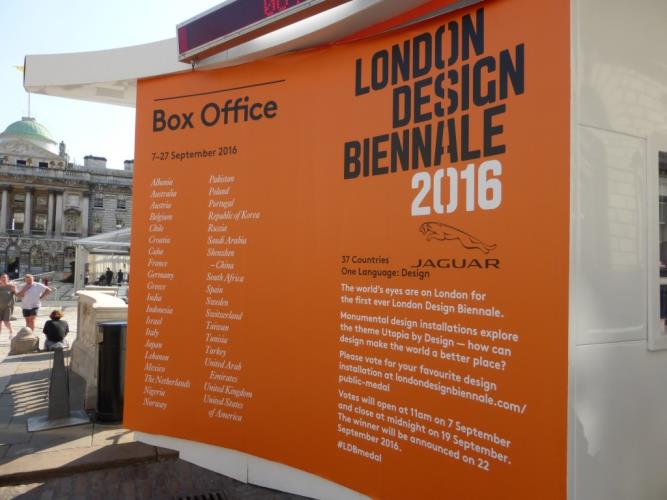Yi-Hsin Lin graduated from SOAS; now living in England as a writer. Lin has participated in the curation of Chinese painting in Victoria and Albert Museum and British Museum. He is also a lecturer in Chinese art at Christie’s Education and contributes to several Chinese-language art magazines.

I have written about London Craft Week and Clerkenwell Design Week in this magazine some time ago and introduced London’s creative culture. In late September, London Design Festival marked that London has become one of the best cities of design in the world. Also, the inaugural London Design Biennale was held this year. Its scale and contents achieved amazing results and successfully caught the attention of design fans worldwide. This has proven that London’s creative industry is thriving.
London Design Festival
London Design Festival was launched in 2003. Unlike other exhibitions that usually are held in one single venue by one organiser, the festival is led by Sir John Sorrell and Ben Evans and draws in talents in the design industry, as well as museums, schools, corporates and individuals. The festival aims to provide a rich, diversified experience of London’s creativity.This year, the festival lasted nine days and boasted more than 500 activities. V&A Museum was the major venue of the festival. Satelite exhibition zones and shopping areas were set up in Bankside, Brixton, Brompton, Chelsea, Clerkenwell, Islington and Shoreditch, etc. By doing so London became a design hub without borders. Various designs could be seen almost everywhere, and audiences were easy to participate in the exhibitions.
Let’s take a look at Bankside located on the bank of the River Thames. Exhibitions on contemporary design were held at Tate Modern and London College Communication. Brixton in south London is an emerging design hub and this time it focused in public art and installation art. The major venue V&A Museum is located in Brompton in the high end west London. Exhibitions on arts and crafts and a series of seminars were held there. Also located in west London, Chelsea showcased an array of interior designs, furniture and accessories and homeware, and the exhibitions attracted a lot of design lovers. Clerkenwell and Islington in north London are well-known for revitalising old buildings with new designs and are highly acclaimed among the audiences. Shoreditch has been participating in the festival for eight consecutive years. Avant garde design concepts were visualised in this part of the East End and they were truly a feast for the eyes.
London Design Biennale
To expand the vision of London Design Festival, and to strengthen the connection with cities in other countries, the organiser of this edition of London Design Biennale actually took La Biennale di Venezia’s mode of operation as a reference. Exhibitors are classified by country so as to showcase that the event is a platform for a global dialogue about design. This year also marks 500 years of Thomas More’s Utopia, the novel that depicts an imagined society with perfect qualities. The book is an inspiration of this edition’s theme—Utopia by Design. Designers and creative professionals from 37 countries were invited to share and present their thoughts and values on aesthetics, with the aim to explore what Utopia is in different cultures and to explore the possibilities of boosting well-being and happiness of this and future generations.
For example, DenCity–A Reachable Utopia in Shenzhen is an installation artwork by an artist from the Mainland. Taiwan’s Eatopia is a visual art presentation that incorporated the concept of food design in it. Architect Liu Xiaodu is the helmsman of DenCity. He expected to solve environmental problems through creating a high-density community. Eatopia is designed by Tseng Shikai, Rain Wu and Lydia Chang, etc. and they aim to create dining experience in a theatrical setting. Issues of ethnic conflict and integration in Taiwan’s history were explored in order to provide more food for thought about the future of Taiwanese culture. All these show that London Design Biennale has engaged diversified groups of organisations to hold exhibitions, and collaborated with corporates to promote the event. With the gradual participation of different arts groups and stakeholders, the biennale is able to grow its impact on the creative industries. I am looking forward to more brilliant ideas in the next edition.